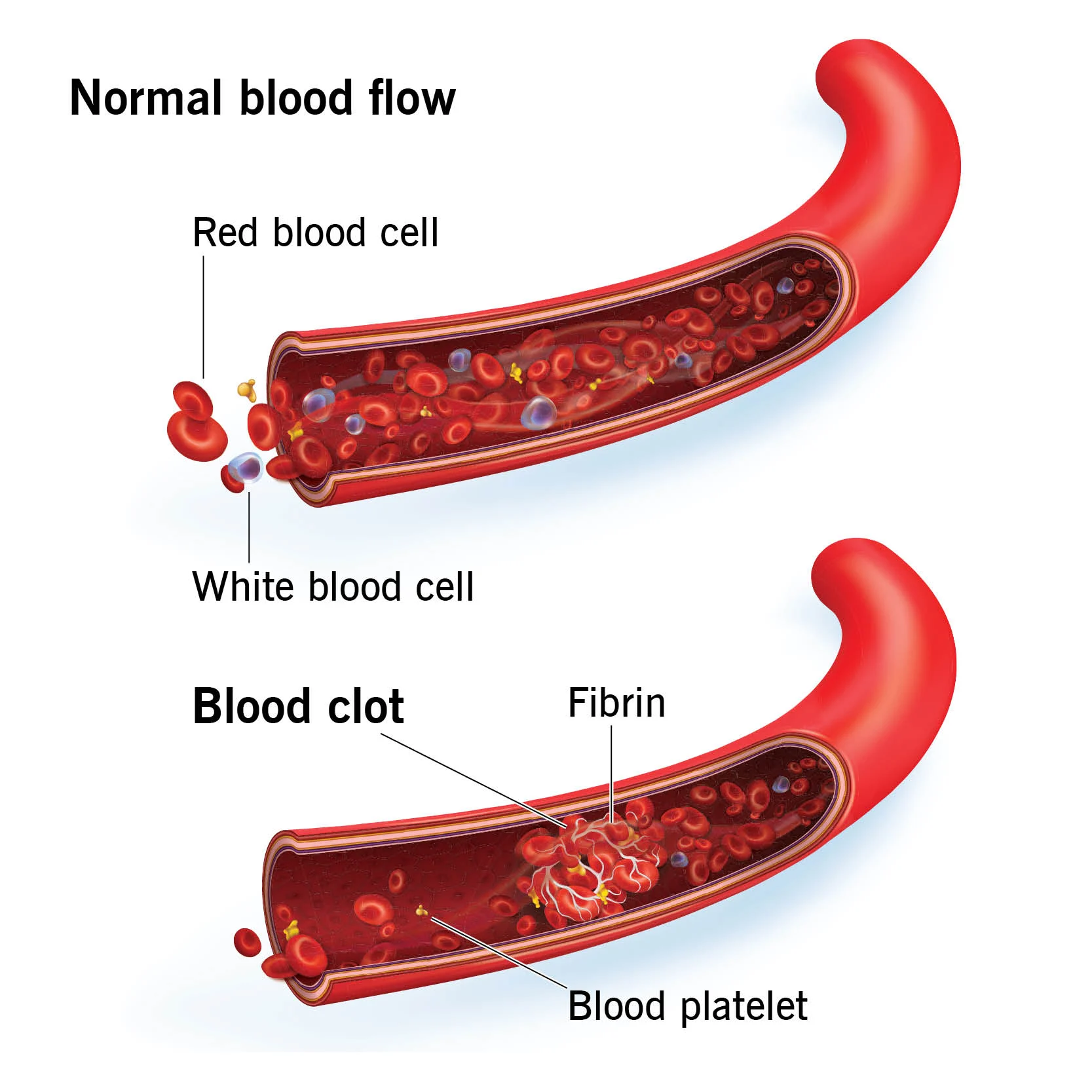D-DIMER
During coagulation sequence of reactions occur in the body in response to variety of external and/or internal stimuli. The enzymatic cascade reaction terminates in the conversion of fibrinogen to fibrin by the enzyme thrombin. The fibrin gel is then converted to a stable fibrin clot. The fibrin network is dissolved by the enzyme plasmin to generate cross -linked fibrin degradation products (FDP).
D.dimer is the smallest plasmin resistant molecular unit present within FDP. An elevated D. dimer may be due VTE, DIC, recent surgery, trauma, infection, liver disease, pregnancy, eclampsia, heart disease, in some cancers and in elderly people. A normal or low D. dimer helps to rule out clotting as the cause of symptoms.
^Remark :-
1. D-Dimer is a fibrin degradation product. The D-Dimer level increases during the activation states of coagulation because such states induce the production of thrombin which is followed by the formation of fibrin & leads to fibrinolysis.
2. This assay can aid in the diagnosis of Deep Vein Thrombosis (DVT) & pulmonary embolism
3. Elevated D Dimer is seen in hypercoagulability, DVT (Deep Vein Thrombosis), DIC (Disseminated intravascular Coagulation), recent surgery, trauma or infection.
4.Up to four fold higher results may be observed in normal pregnancy.
^Limitations :-
1. False Negative : Anticoagulant therapy.
2. False Positive : (i) Elderly, (ii) Liver disease, (iii) Pregnancy, (iv) Eclampsia, (v) Heart disease, (vi) Rheumatoid arthritis, (vii) Some cancers, (viii) High triglycerides, (ix) Hemolysis, (x) Lipemia, (xi) Hyperbilirubinemia.



